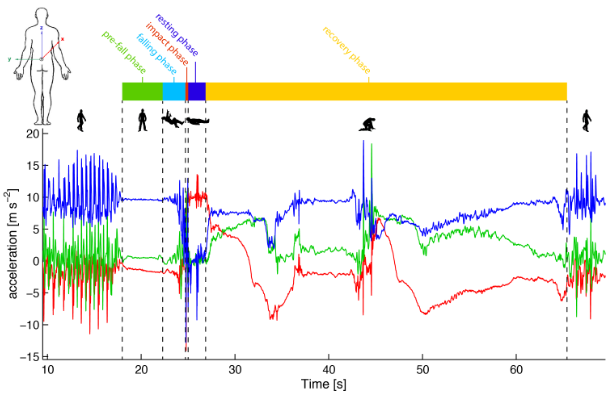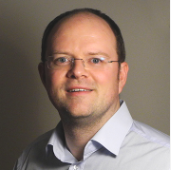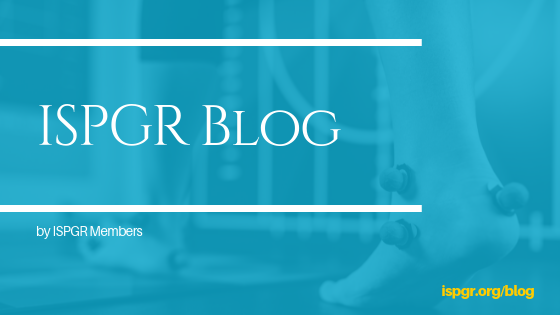Recent advances in body-worn sensor technology make it possible to objectively measure real-world fall events. These exciting new developments in research areas of software engineering, biomechanics and big data management can improve our understanding of fall events in older people. However, there is one problem: These events are rare and hence challenging to capture. This has been the motivation behind the EU-funded FARSEEING consortium, who, together with associated partners, have started building a meta-database of real-world falls.
Between January 2012 and December 2015, a large number of real-world fall events measured by inertial sensors have been reported to the database. A signal processing and fall verification procedure has been developed and applied to the data. Currently, more than 200 verified real-world fall events are available for analyses. The fall events have been recorded within several studies, with different methods, and in different populations. All sensor signals include at least accelerometer measurements and 58 % also include gyroscope and magnetometer measurements. The collection of data is ongoing and open to further partners contributing with fall signals.
Figure 3 shows a real-world fall signal example (acceleration) with labeled activities and fall phases. The sensor (Samsung Galaxy S3) was attached at the lower back, sampling at 100 Hz. The faller reported a backwards fall while pushing the door opener. The person was upright at the beginning, indicated by the vertical axis (blue) showing 10 m/s2, including some walking. During the fall the vertical signal changes to 0 m/s2 and the anterior-posterior axis (red) to 10 m/s2, indicating a backward fall. After a short period of resting, the person recovered with an intermediate resting position and continued walking.

This meta-database is currently the largest collection of real-world falls using inertial sensors. It will help to substantially improve the understanding of falls and enable new approaches in fall risk assessment, fall prevention, and fall detection. The FARSEEING consortium aims to share the falls data with other researchers. A dataset of 20 selected fall events is available on request via the project website. Researchers are also invited to collaborate with the FARSEEING consortium on specific research questions.
More information about the project and the data sharing policy can be found on the FARSEEING website (www.farseeingresearch.eu).
Publication
Klenk J, Schwickert L, Palmerini L, Mellone S, Bourke A, Ihlen EAF, Kerse N, Hauer K, Pijnappels M, Synofzik M, Srulijes K, Maetzler W, Helbostad JL, Zijlstra W, Aminian K, Todd C, Chiari L, Becker C. The FARSEEING real-world fall repository: a large-scale collaborative database to collect and share sensor signals from real-world falls. European Review of Aging and Physical Activity. 2016;13:8.
http://https://eurapa.biomedcentral.com/articles/10.1186/s11556-016-0168-9
About the Author

Jochen Klenk
Department of Clinical Gerontology, Robert Bosch Hospital Stuttgart and Institute of Epidemiology and Medical Biometry, Ulm University
Jochen Klenk is a Senior Research Scientist at the Robert-Bosch-Hospital (RBK) and at the Institute of Epidemiology and Medical Biometry at Ulm University. He leads the working group on fall signal analysis at the RBK and is the FARSEEING database manager. Further research interests are longitudinal data analysis of large observational studies and physical activity monitoring.
Copyright
© 2018 by the author. Except as otherwise noted, the ISPGR blog, including its text and figures, is licensed under a Creative Commons Attribution-ShareAlike 4.0 International License. To view a copy of this license, visit https://creativecommons.org/licenses/by-sa/4.0/legalcode.
ISPGR blog (ISSN 2561-4703)
Are you interested in writing a blog post for the ISPGR website? If so, please email the ISGPR Secretariat with the following information:
- First and Last Name
- Institution/Affiliation
- Paper you will be referencing

